Sandy Springs ‘Fiddler’ Features Innovative Staging
Director Shuler Hensley and scenic designer, Jacob Olson, have created a mysterious, abstract stage setting.
When the curtain rises on the village of Anatevka in the new City Springs Theatre production of “Fiddler On The Roof” in Sandy Springs, it is a community reimagined.
This is not the visually sumptuous Anatevka, as envisioned by Boris Aronson in his Chagall-like sketches for the 1964 premiere performance. And this is certainly not the gaily imagined Anatevka of Norman Jewison’s Oscar-winning 1971 Technicolor film, with its loving and precise recreation of the village and its beautiful wooden synagogue.
No, in this stage set created by the innovative production designer Jacob Olson, black predominates. A large wooden tower takes up much of stage center. It is enclosed by the outlines of a structure that suggests an even bigger house, hewn from massive black posts on either side of the stage.
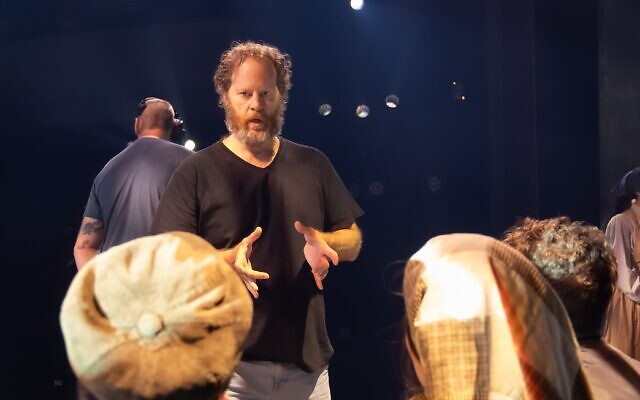
They dwarf the other dominant figure in the production, Tevya, the milkman, who is on stage for most of the nearly three hours of the production. He’s played by New York actor Jacob Fishel, who gives this Tevya a realistic edge and a directness that is in sharp contrast to some of the past interpreters of the role.
Although Fishel was born Jewish, he grew up with little knowledge of Jewish life. He first became interested in his heritage when he made his Broadway debut almost 20 years ago as Motel the tailor in a revival of “Fiddler,” which starred Harvey Fierstein. To prepare for his role at the Sandy Springs Performing Arts Center productions, he went back to the original stories of Tevya, written in the first decades of the 20th century by Sholem Aleichem, the famous Jewish writer. He found him to be something he could identify with, both physically and psychologically.
“Sholem Aleichem describes Tevya as a small man and is roughly the same age as himself, around 40,” Fishel says. “He’s not a large man so realistically he’s not the kind of Falstaffian figure that Zero Mostel played in the original production or the kind of grandfather figure that he’s evolved into over the years. He’s younger and he doesn’t know what he’s doing as a father. So, he’s trying to figure it all out.”
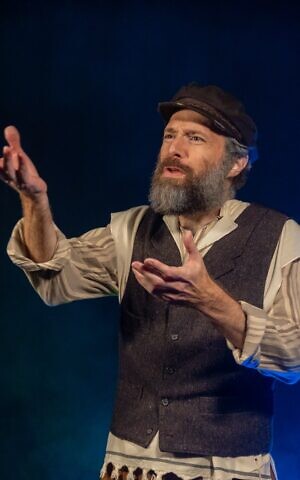
As Fishel comments, Tevya has no parents to discuss the difficulties he has with his daughters. So, he’s on his own, finding himself continually surprised and because of it, having to improvise much in his life.
“He has no idea what the right thing to do is,” Fishel notes, “but we have the opening number which is about tradition. It’s the only thing that Tevya is really certain about to the very end of the play.”
Looming over his struggles to understand all the changes that are occurring in Czarist Russia is that black tower, that seems to have some sort of control over Anatevka. The village is suggested by a series of a dozen or so simple outlines of houses, also in black, lit by a single light in each. They are raised and lowered, presumably from the great monumental black tower at the center of the stage. The large structure is vaguely reminiscent of the Burning Man pyre that is built each year in the middle of the Nevada desert.
So, while the director of this production, Shuler Hensley, has given us a crisp, fast-moving, energetic production with all its tuneful melodies, there is also a fateful darkness that hangs over all the lively singing and dancing.
This is a time, around 1905, when Russia was stirred by revolutionary unrest and a harsh antisemitism that had been building through much of the last decade of the previous century. The notorious Protocols of the Elders of Zions had been fabricated and circulated by the Russian secret police. The well publicized Kishinev massacres of Jews had occurred in Russia only two years before.
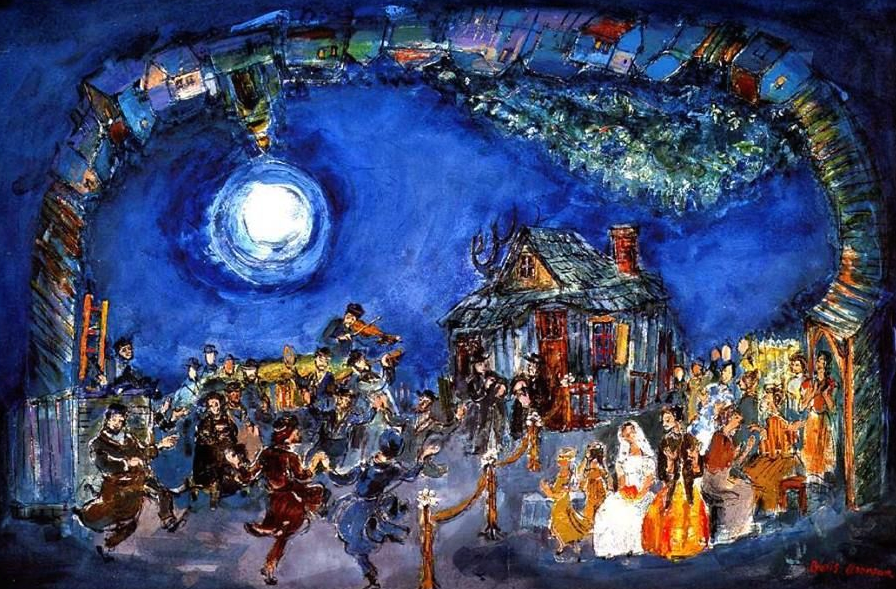
It is one of the ironic tragedies of our time, that on the same night that Fiddler on the Roof opened in Sandy Springs hundred of Hamas terrorists were assembling in Gaza to make last minute preparations for their murderous attack in the south of Israel. The darkness that is so much a part of this production was about to descend, in real life, 7,000 miles away.
Six days after the opening, on Wednesday, Oct. 11, Temple Sinai in Sandy Springs hosted an interfaith evening with Holy Innocents Episcopal Church to explore both the darker and the lighter themes of the production. The guests with the show’s star, Fishel and Courtenay Collins, an Atlanta actress who plays Yente, the matchmaker. Temple Sinai Rabbi Ron Segal was joined in the synagogue’s sanctuary by the pastor of Holy Innocents Church, Bill Murray.
Rabbi Segal prefaced the discussion with a reference to the extraordinary events of the preceding days and the effect that they had had on him and the entire community. With the mayor of Sandy Springs, Rusty Paul, in the audience for the program, he personally thanked those who had come that evening for their partnership and friendship. Rabbi Segal followed it up with a prayer that asked for G-d’s protection and guidance in the days ahead.
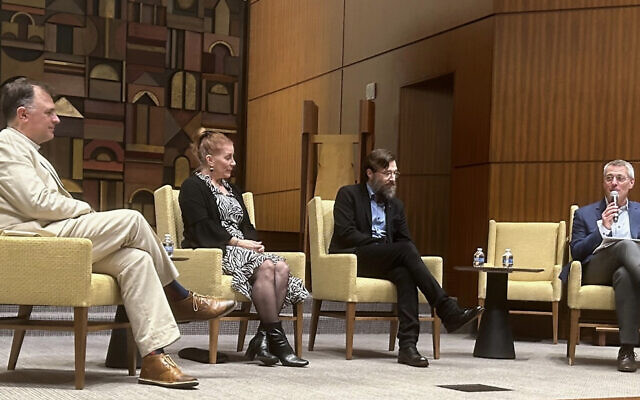
It was perhaps a plea, not unlike the Jews of Anetevka might have uttered during the closing scenes of the play. Once they had been so joyously singing and dancing now they are being forced from their homes and their small town by a Czarist decree. Each leaves with a heavy heart for an uncertain future.
In the Sandy Spring production the small outlines of their homes are lifted into the air and disappear one by one until just a single one remains. And then it too, with its one light, is extinguished. The fiddler who has opened and closes the show with a brief, bright tune, lays his violin down at the base of the great black, mysterious structure and the stage darkens.
The star of the show, Jacob Fishel, says each performance teaches him so much.
“My heart is always full every time I’ve done this show and every performance is an education in itself.”
- Arts and Culture
- Local
- Bob Bahr
- City Springs Theatre
- Fiddler on the Roof
- Anatevka
- Boris Aronson
- Norman Jewison
- Jacob Olson
- Jacob Fishel
- Harvey Fierstein
- Sholem Aleichem
- Zero Mostel
- Czarist Russia
- Shuler Hensley
- Protocols of the Elders of Zions
- Temple Sinai
- Rabbi Ron Segal
- Holy Innocents Church
- Bill Murray
- Courtenay Collins



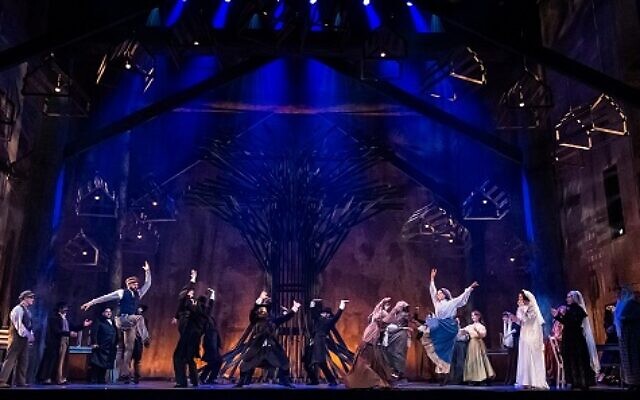
comments